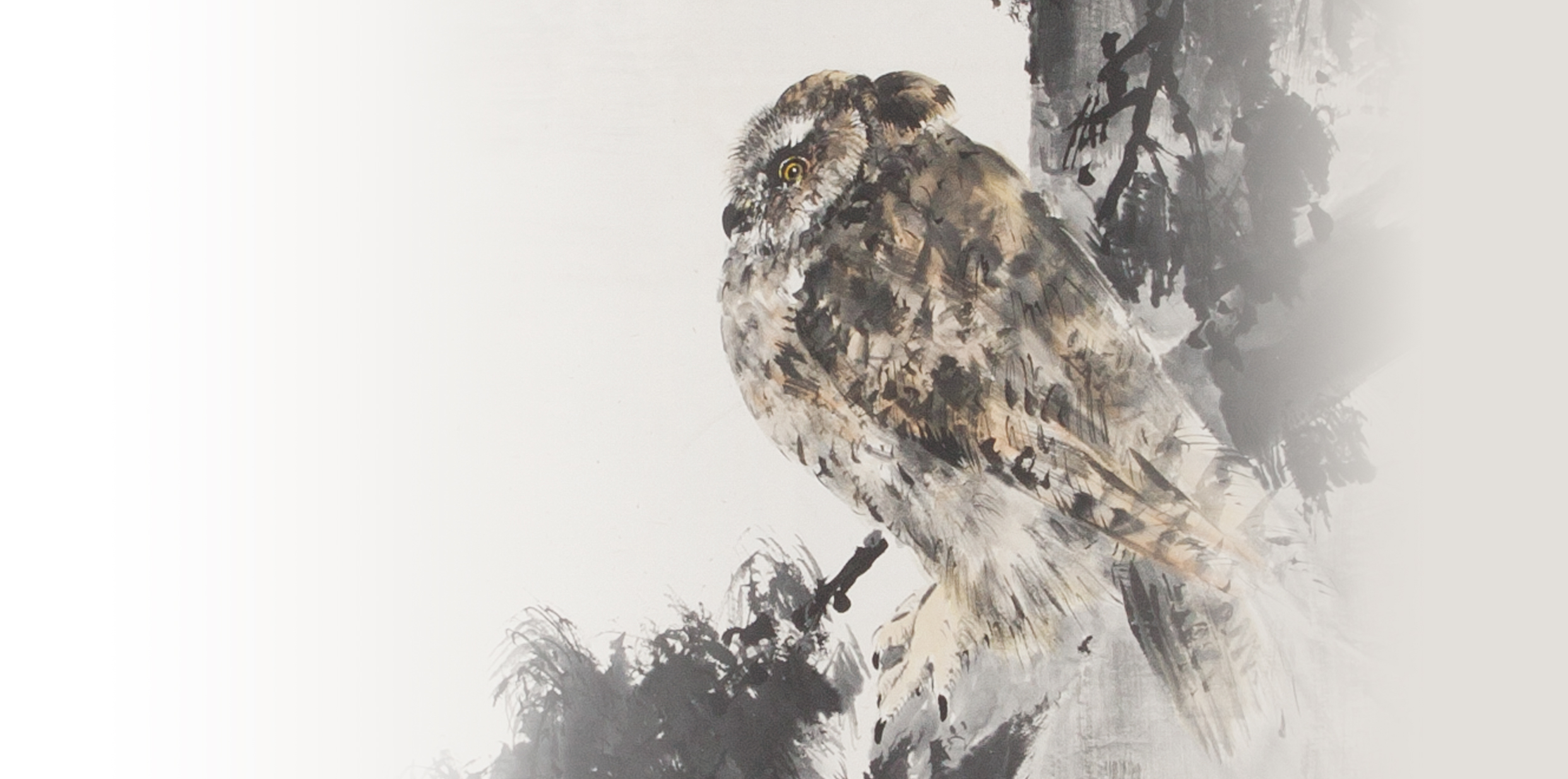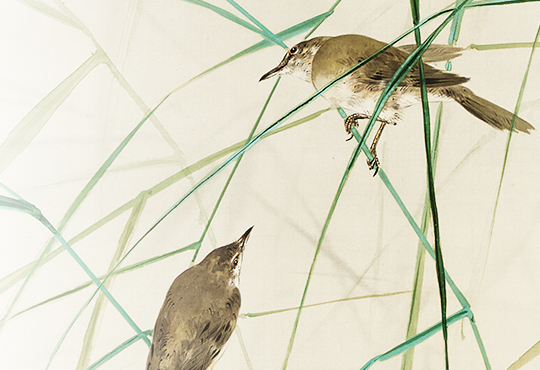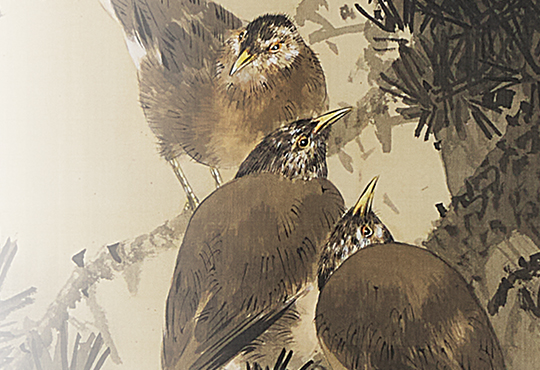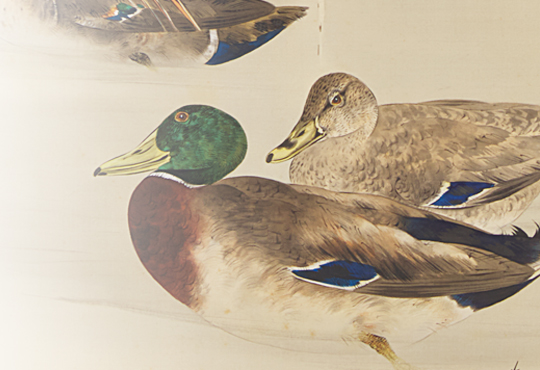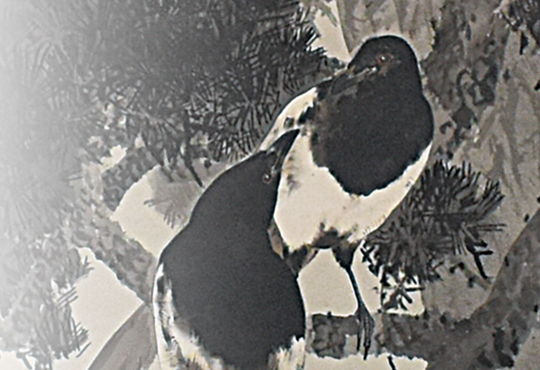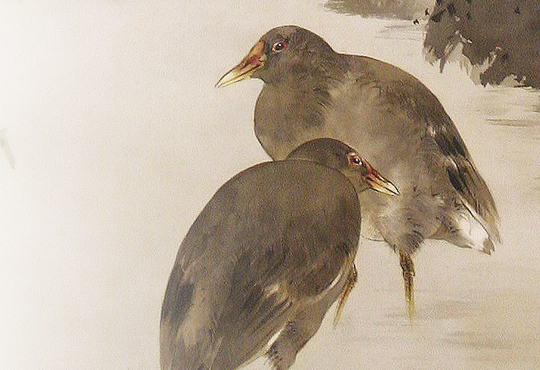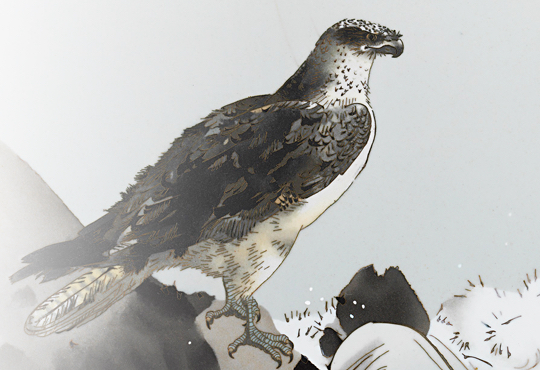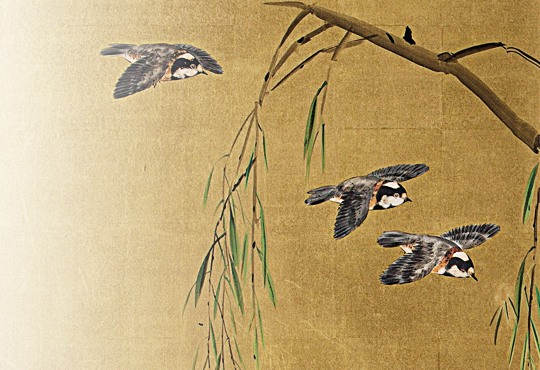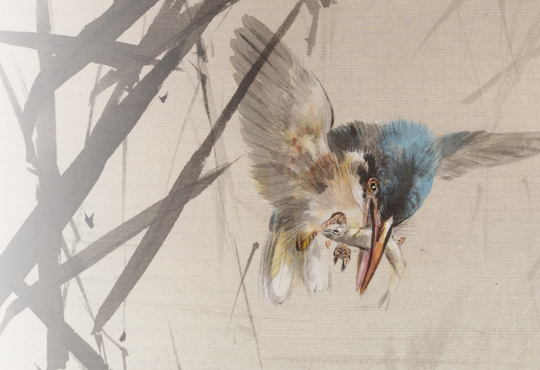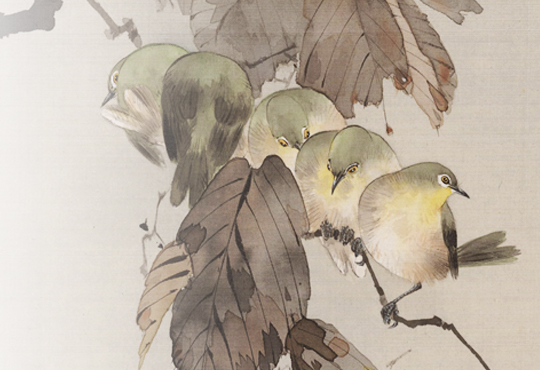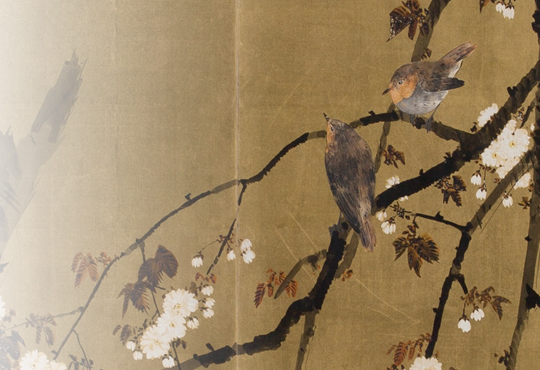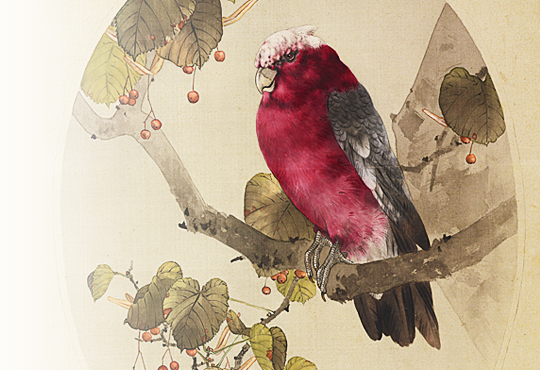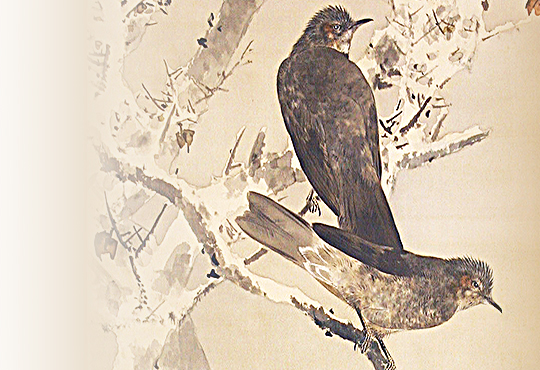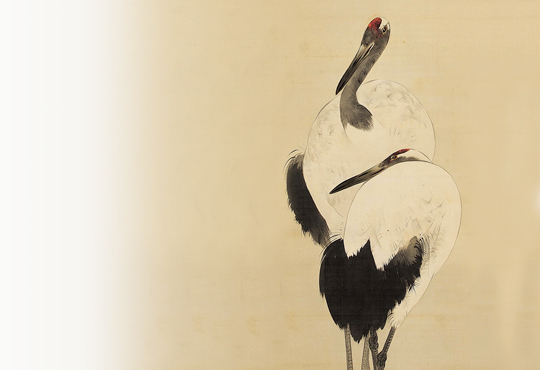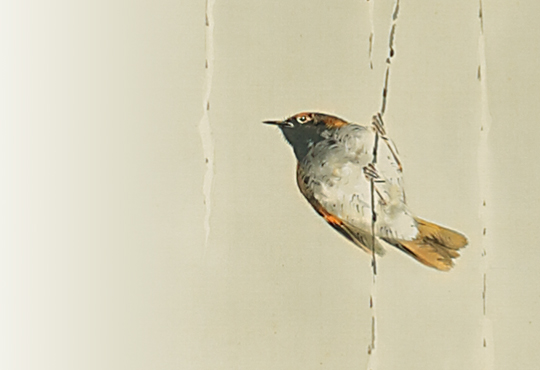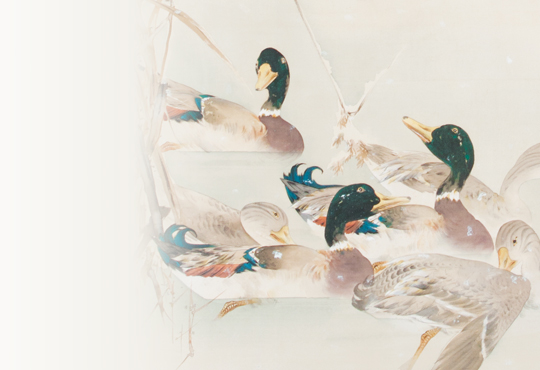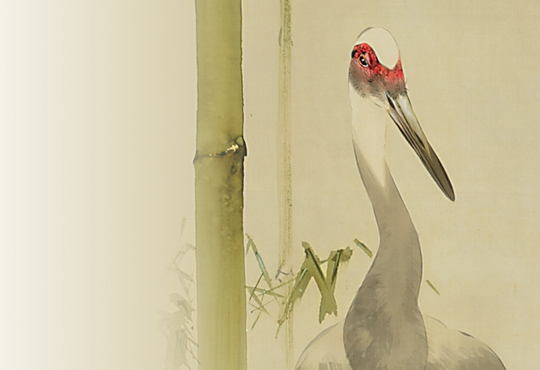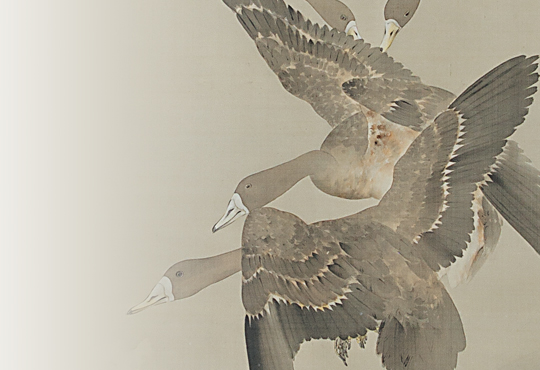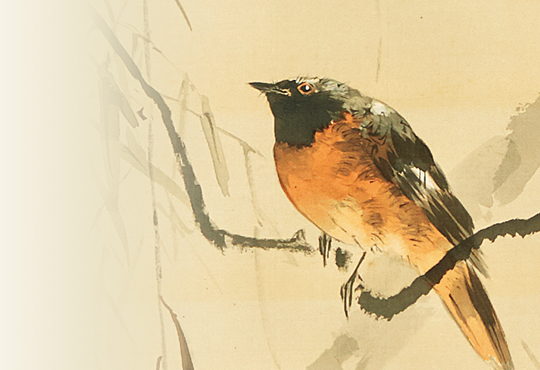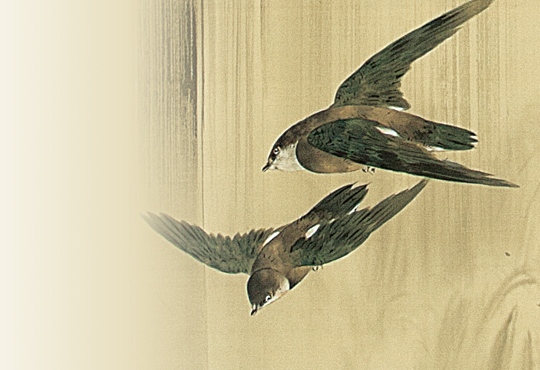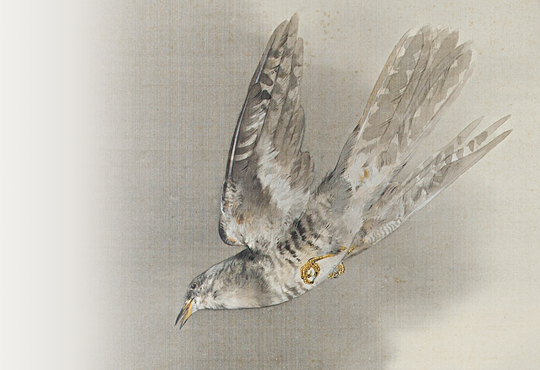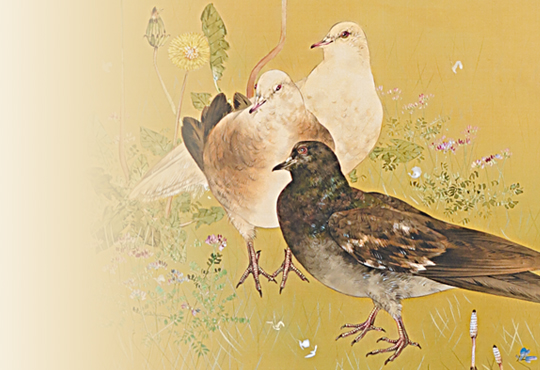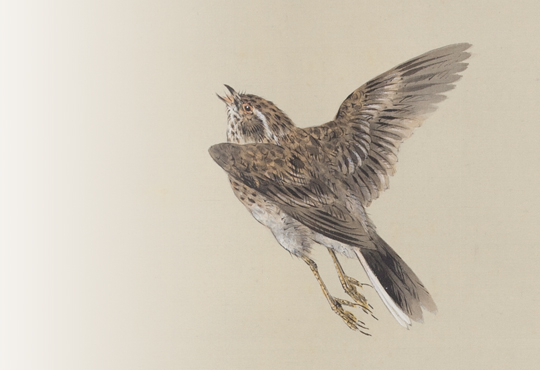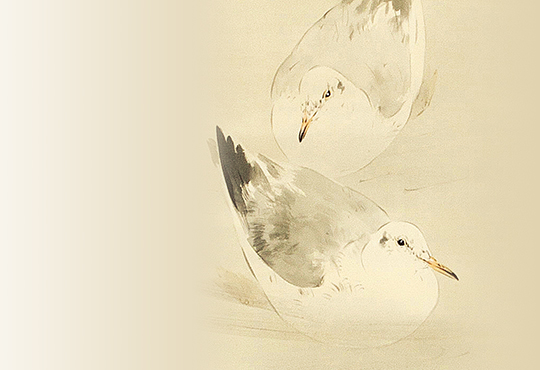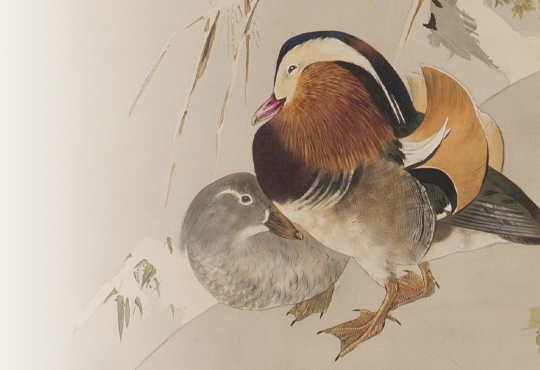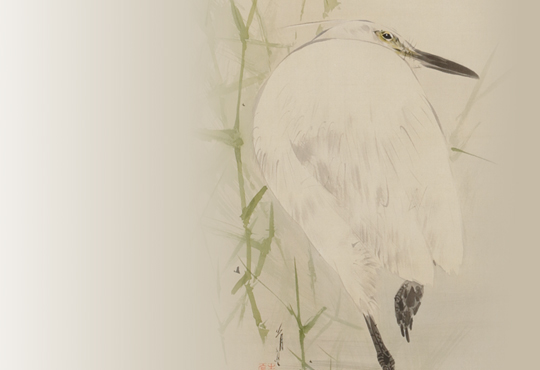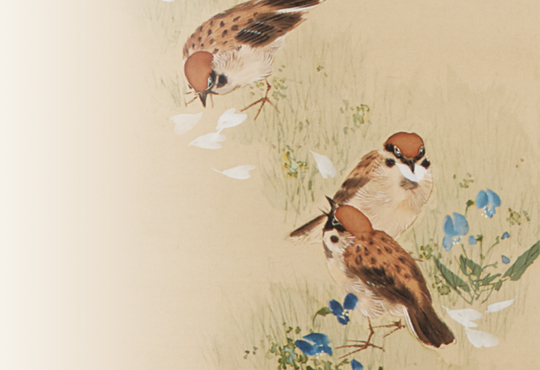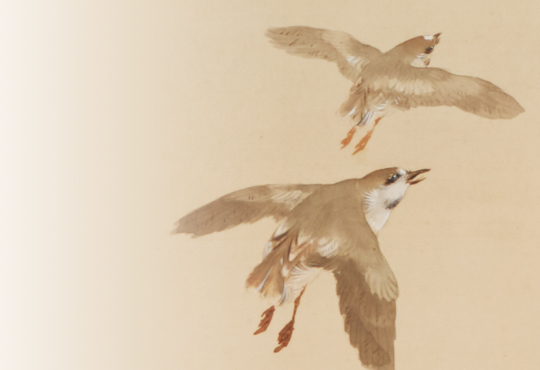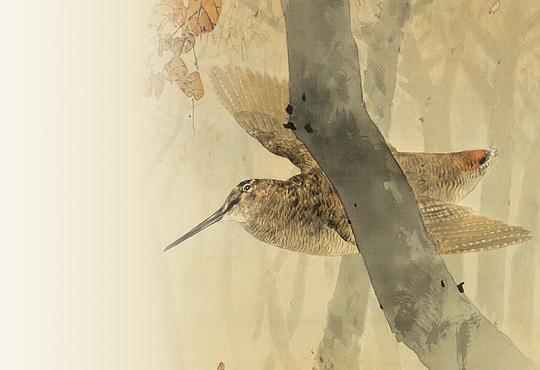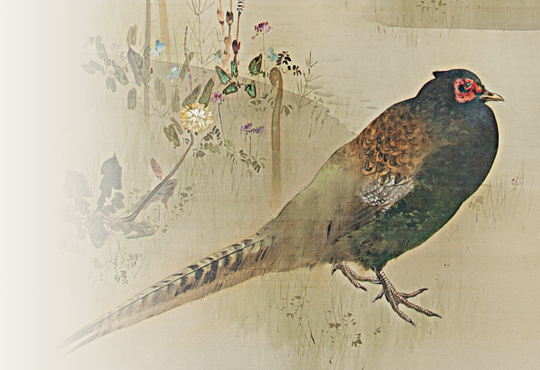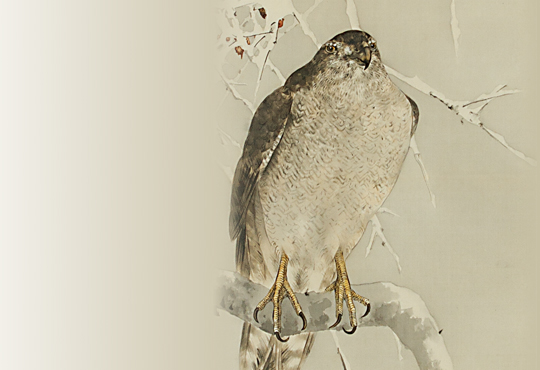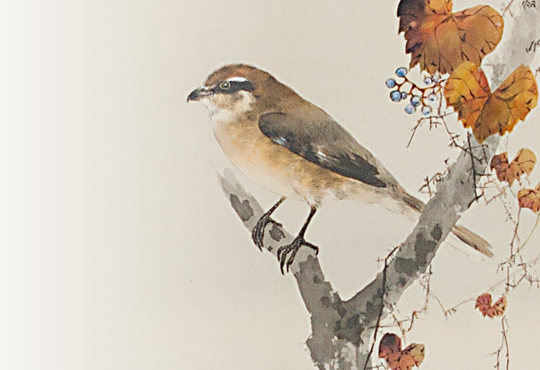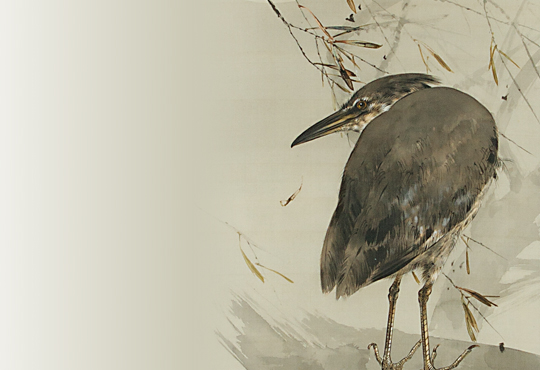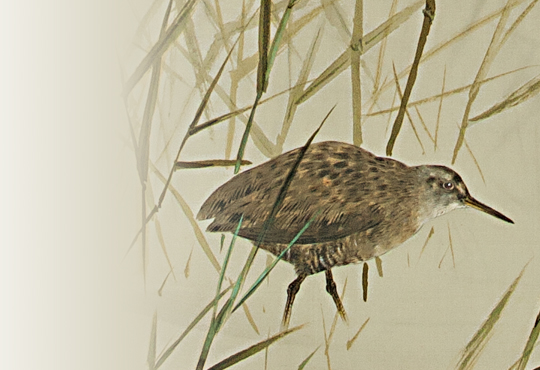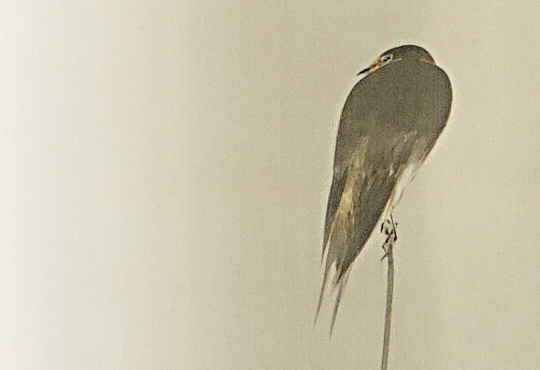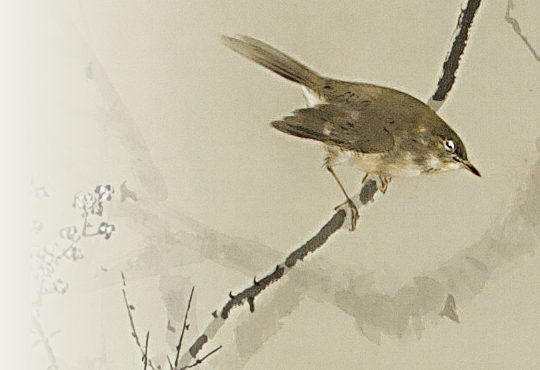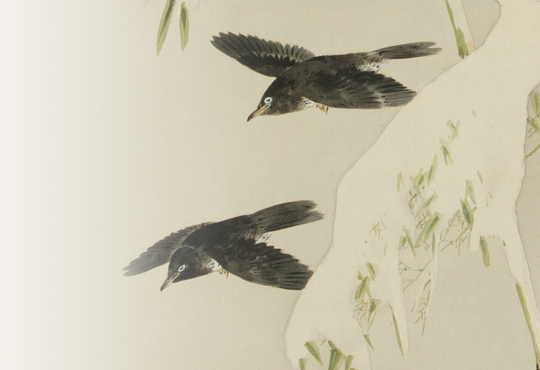vol.17 The Side-profile of An Owl:Horned Owl by Moonlight
Owls are nocturnal predators with unique physical qualities that distinguishes them from other birds. With their large eyes, they can see their surrounding in the darkness, and owls can locate sound sources since the position of their left and right ears are asymmetric. Many species of owls have faces that resemble flat discs, bordered by characteristic feathers. Known as the facial disc, they function like parabolic antennas and help gather sounds from whichever direction they face. Their body is covered with extremely soft feathers, and the surface of their wing feathers are smooth like felt. The outer edges of their primary wing feathers contain many hook-shaped protrusions that functions to silence and reduce the sound of their flutter. With the advantage of these various physical traits, they hunt in the darkness and seize unsuspecting prey with sharp claws. Undoubtedly, they are the silent hunters of the dark.
The face of the owl is rather easy to draw from its front. If you draw the contour of their round head and heart-shaped facial disk, add a pair of large eyes and a small beak, your drawing of an owl will hold much resemblance. This is because their frontal face retains a flat, two-dimensional quality, and is, therefore, inherently compatible with the two-dimensional medium of painting. On the other hand, the owl’s side-profile is exceedingly difficult to draw. Like drawing a flat plate from the side, because our restricted view obscures our ability to perceive its depth, the contours of its side-profile are difficult to draw. Moreover, because their eyes and beak occupy the center of their face, a side-view obscures their features and makes it difficult to capture their position and form. Whilst many birds have faces that is difficult to draw from a front but easier from the side, with the owl, this situation becomes reversed due to the peculiarity of their physical qualities.
Due to these complications, past painters would rarely depict an owl’s face from its side. In many works, such as Kano Sansetsu’s “Owl and Rooster” (The Nezu Museum) and Maruyama Okyo’s “Shinzan Daitaku Folding Screen” (Ninna-ji Temple), a frontal face would have been planned into the original composition, however, there are cases where it appears unnatural. For instance, Hasegawa Tohaku’s “Buddha’s Nirvana” (Honpo-ji Temple) depicts a scene where numerous disciples and animals gather to mourn tearfully over Buddha’s final death (i.e. Nirvana). Yet, in the lower right corner of the image, a single owl faces, not at the Buddha, but to us, at the very front of the screen. If painted properly, the owl would have been facing the side and towards Buddha, but perhaps even Hasegawa Tohaku found it too difficult to draw an owl from its side.
Now, this work depicts a lone owl resting on a big tree branch. Known as the Long-eared Owl (Asio otus; 36cm in body length), it is a medium sized owl that is dispersed widely throughout central Eurasia (Europe to Japan) and central North America (South Canada to North Mexico). In Japan, they breed around the Northern and Eastern regions and spend their winters in the Eastern and Southern regions. They live in the forest of plains and, although they spend their days hiding and resting amidst the groves, once morning turns to night, they begin to hunt for mice at neighboring grasslands and farmlands. In the past, owls were more common and would breed at forests around rural and urban areas, however, in recent times, the number of observations has noticeably decreased. Fortunately, in the Southern part of the Tohoku region, a confirmed breeding area, one may witness the sight of adorable fledglings in town.
Remarkably, this work depicts the Long-eared Owl through its side. Furthermore, Seitei’s perfected realism captures the owl’s characteristic red-brown body and wings with the innumerous black spots, big ear tufts (an owl’s seemingly ornate ear feathers), red-brown eyes, and legs covered by feathers and, as usual, his depiction leaves no room for complaint. In addition, the back of the owl is expressed with the full complexity of its color patterns, which gifts us the impression of its softness. Finally, its side-profile is depicted with the correct flatness of its facial disc, and its surrounding array of characteristic small feathers is painted in fine detail. This work is emblem to Seitei’s superior drawing technique and excellent sense of color. On an additional note, Seitei also depicts a Long-eared Owl in “Cedar tree and Horned Owl by Moonlight” (Saitama Museum of Art), however, this portrayal is front-faced.
Why would Seitei choose to depict the Long-eared Owl as side-faced in this piece? I suspect it was because of his great self-confidence in his drawing abilities. Perhaps Seitei noticed that the owl’s side-profile was rarely drawn and decided to draw as a way to challenge this and test the extent of his abilities. Nevertheless, even Seitei would have needed a model to refer to. Most likely, he would have access to a Long-eared Owl or its stuffing, which he could carefully study and transcribe unto this very work. Since the Long-eared Owl would not have been easily obtained, it is likely that this piece and “Cedar tree and Horned owl by Moonlight” were created in the same period using the same model.
From all the Seitei’s bird paintings, I see evidences of his new challenges. With him being a seeker of the artistry, I feel much respect towards the sincerity of his approach.
Author : Masao Takahashi Ph.D. (Ornithologist)
Dr. Masao Takahashi was born 1982 in Hachinohe (Aomori prefecture) and graduated from Rikkyo University’s Graduate School of Science. Dr. Takahashi specializes in behavioral ecology and the conservation of birds that inhabit farmlands and wet grasslands. Focusing on the relation between birds and art, he has participated in various museum and gallery talks.
